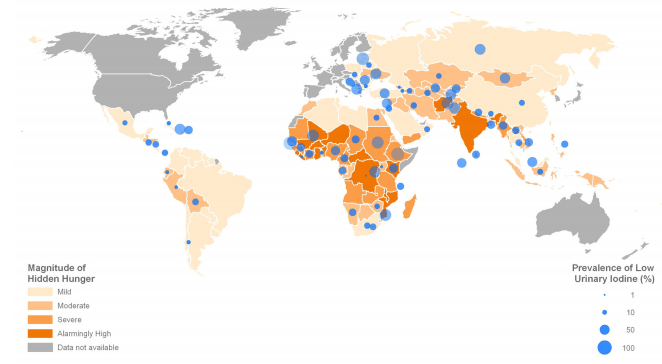Today’s map comes from the scientific journal PLoS One. The Global Hidden Hunger Indices and Maps: An Advocacy Tool for Action shows countries where micro nutrient deficiency is alarmingly high.

Micronutrient deficiency is often called “hidden hunger” because outward signs of malnutrition may not be as apparent compared to low calorie intake. Bodies are not visibly wasting away, but the results of micronutrient deficiency can be no less pernicious. Children who don’t receive proper vitamins and minerals may become stunted or suffer from mental impairment that last a lifetime. Pregnant women are also high at risk should they lack critical nutrients.
The good news, such as it is, is that has been a growing focus on this particular issue over the past few years. Efforts to tackle malnutrition coalesce around the Scaling Up Nutrition Network, a partnership of various stakeholders that design and implement country-specific solutions tackle micronutrient deficiency. This can include strategies like fortifying staple foods like cooking oil and milk; and other community based interventions to deliver nutrient powders that mothers can sprinkle over their children’s food.
This is an important task. As the study notes some 2 billion people around the world are somehow affected by this kind of of hidden hunger.
